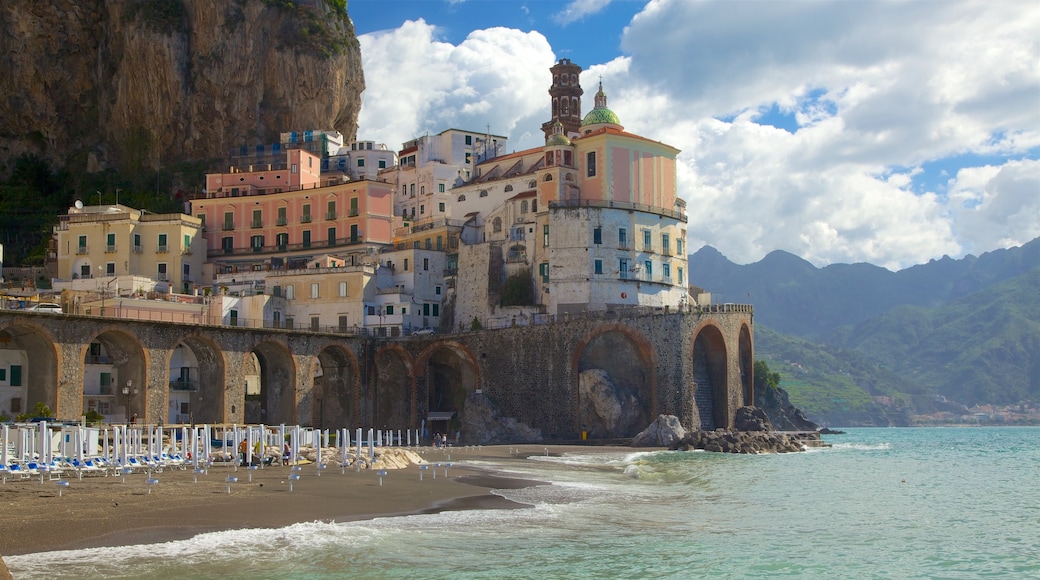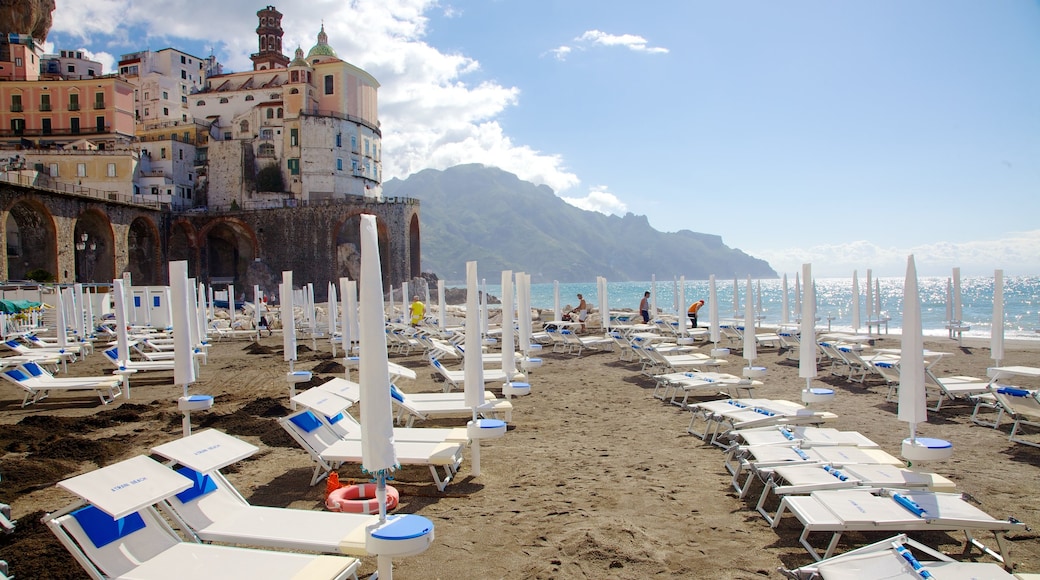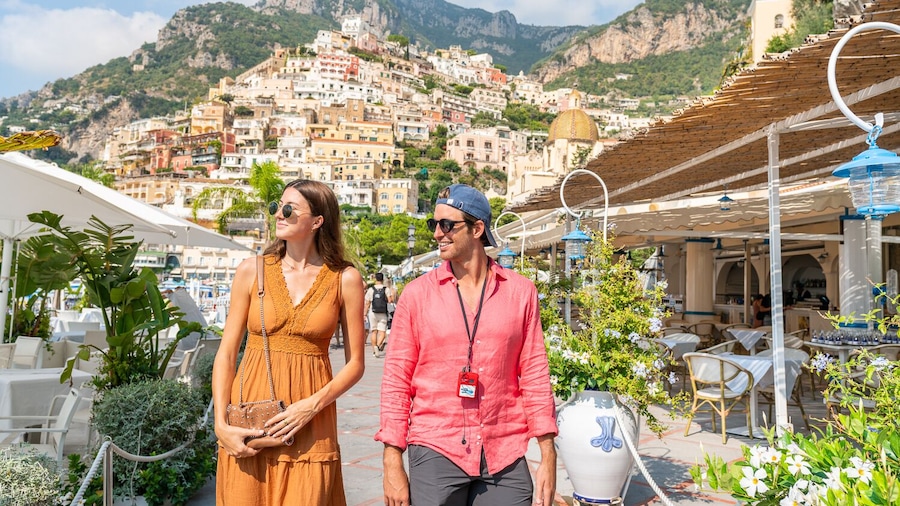One of the smallest villages on the Amalfi Coast is an attractive destination for its ancient streets and religious buildings.
Atrani is a charming jumble of shaded alleyways, arches, churches, courtyards and piazzas. This small fishing village is built on the edge of a hill and its traditional white houses are interspersed with gardens and terraces of lemon trees. The winding paths, narrow streets and many flights of stairs have changed little over the centuries.
The town’s main entrance is near the beach, and from there it’s a steep walk up to discover the mountain resort’s attractions.
Atrani has several ancient churches. Many contain tombs of nobles, frescoes and other religious artworks. Visit the Church of Our Lady of Mount Carmel with its moorish bell tower, and admire the 15th century fresco of the Madonna. Study the religious scenes on the bronze doors of the Church of San Salvatore de' Birecto. They were made in Constantinople (now Istanbul) in 1087.
Go to the Collegiate Church of Santa Maria Maddalena. Built in 1274 on the ruins of a fortress, its majolica tiled roof and square bell tower make it a dominant feature of Atrani’s skyline.
Drop in on the Grotto of the Saints, just above the old road that linked Atrani to Amalfi. The walls of this natural cave are decorated with religious frescoes.
Stop for a drink or meal in one of the cafes lining Piazza Umberto I, the main square in the heart of the village. The square is only a few steps away from the beach.
Atrani is approximately 3,000 feet (700 metres) from Amalfi and is a short walk or bus ride from its bus or ferry terminal. The SITA bus service runs along the Amalfi Coast with stops at most of the towns and villages including Atrani. Alternatively, take the ferry from Salerno, Sorrento or Naples.



















